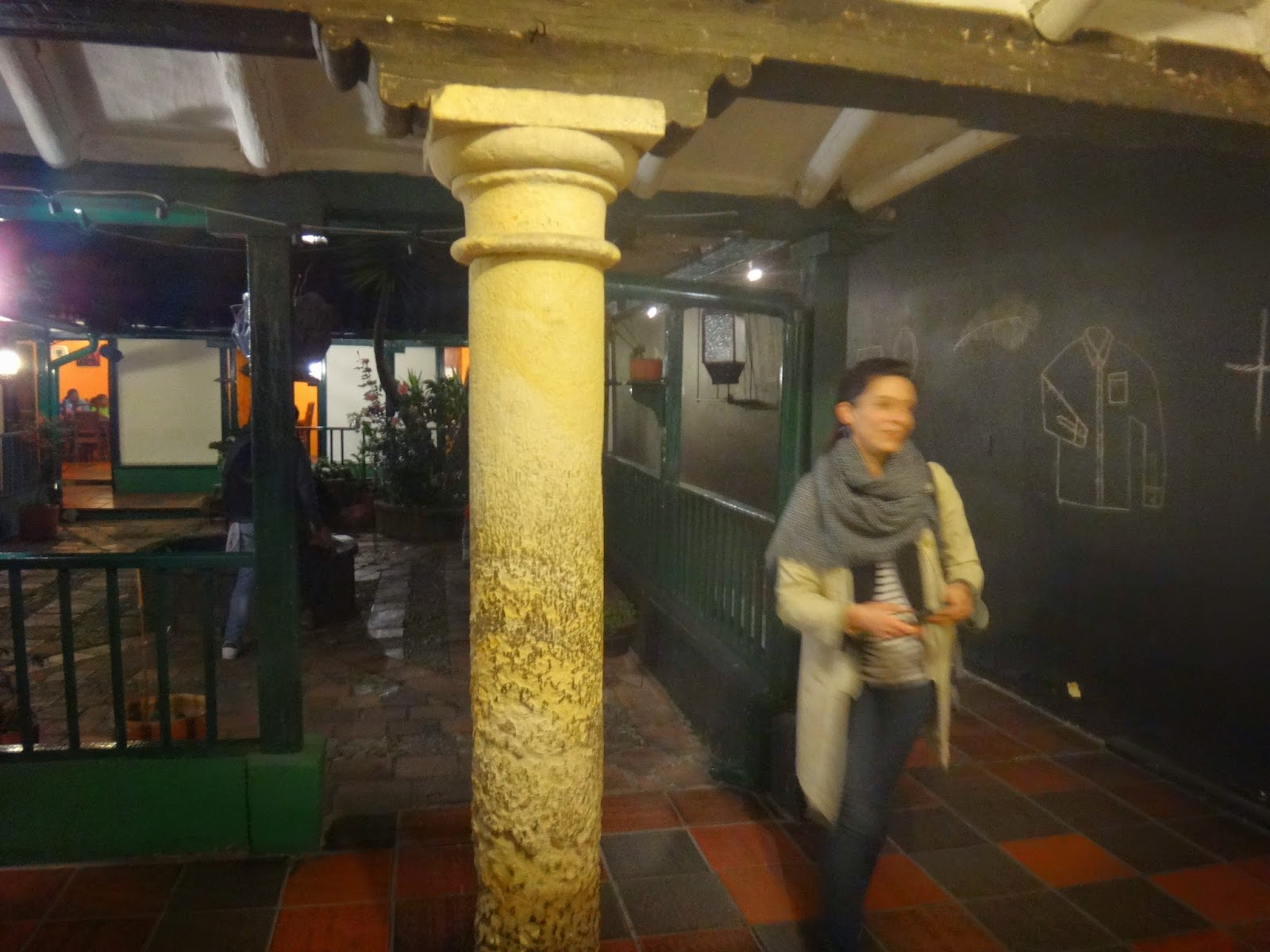A Final Word
from the William Kentridge exhibit in Bogota
Finally, for all the inspiring talk and all the brilliance,
there seemed to me to be one enormous elephant in the room. It was pointed out –
unanimously – by a panel made up of indigenous elders from around Colombia.
“Coal is the brain of Mother Earth,” said an elder from the
peoples of Sierra Nevada de Santa Marta. He addressed the audience as Little
Brothers – and his people have had a long track record of being the Elder
Brothers, predicting coming natural events through living in harmony with their
mountains, and reading the minute changes.
But the changes are no longer minute. Climate change –
probably the most enormous calamity our species has ever faced – is on its way.
And, as in Canada, it is the Native population who seems to be paying it the
attention it deserves.
What was remarkable for me was that here were three South
American native leaders – from nations I knew nothing about – who were asked to
speak of their culture and art. What they all chose to say, speaking with
generosity, and authority, is that our culture and our art are tied to
nature, and nature is not well. THAT’S what is now important.
What struck me as odd, listening to these men, is that the
world’s artists (with some notable exceptions), are not yet up to speed on this
file. And yet our role will be important, as it always has been in processing upheaval
(as evidenced here vis a vis the violence in Colombia and as evidenced
throughout history in times of war, disaster or disturbance). But we need to
heed the warnings of elders such as these.
“Where there is no respect for others, there is death”. Says
an elder from the Wayuu people. “How can we reach well being if we are spending
resources from our Mother Earth for war?”
He speaks of the current state of his homeland: “We are
hungry. We are thirsty. And our animals are dying. The plants are sad. The
plants are desolated. Birds are sad. Even stones are sad.”
Another elder, from a different nation, says, “Wherever you
are, give back to mother earth what you have received. Prepare a world for
those who will be here after.”
In the end, this was what I learned in Bogota. That massive
change is coming. That it may very well render even the stones sad. And that
artists, undisciplined, caring, dedicated, asking for your time and your presence
–such artists can help.
Sylvie, from Cirque Eloise in Montreal - final party.
Mariana - a theatre student from Bogota, and the Most Helpful Person
Ryan Cunningham, from Native Earth in Toronto, Allegra Galvin from the Quarterhouse in England, and me. Although I seem to have lost my teeth, i also seem unperturbed by this.
The Band on the last day.
from the William Kentridge exhibit in Bogota
William Kentridge
One of the stations of the cross on the walk to the Monseratte Monastery
National Gallery. Not yet out of the frying pan...
Botero exhibit at the National Gallery
A view of Bogota
Street view
me, Daan Bauwens (from de Bijloke in Ghent), Chris Lorway (Soundstreams, Toronto), and Frank Pauwels (also from de Bijloke), stride to the next session
Street view
The startlingly intelligent Olga from the board of Circolombia
The Out of Control Don't Spend Too Much Time with This Man or you will Die Laughing Jonathan Holloway, from the Perth Festival
Allegra and Friend
William Kentridge
City Bus (they are all brightly and variously painted)
When in doubt...
Street view
Behind the Monestary
The amazing Shoshana Polanco from the Buenos Aires fesitval
Colombian Soprano, Betty Garcia
a face from a doc on Colombian violence - all these people sang songs they composed about what had happened to them.
Monastery graffiti
Street view
a peek at Bogota
William Kentridge










































